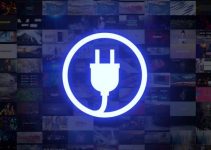One of the most challenging aspects of flying a drone is the amount of actual flight time you get per shoot. Since filmmaking quadcopters need to stay as compact as possible while being up in the air, the batteries designed to power these devices are only able to sustain flight times up to less than an hour at most.
Due to this tedious limitation, many aerial videographers find it tricky to get the perfect shot on schedule, since time for battery swapping must be accounted for. Fortunately, Tom Frey of Tom’s Tech Time suggests a few tricks that you can use to extend the amount of flight time you get with your DJI drone.
When filming with such a device, it’s important to note that the location and environment you’re shooting in can drastically affect your flight time. For example, the higher you fly your drone, the less battery life you will get since there are less air pressure and density at high altitudes.
In addition to height, the temperature also has consequential effects on your drone’s battery. Due to the sensitivity of the chemistry inside the power units, avoid operating your DJI drone in extreme weather conditions if possible.
This goes for both very hot (desert) and very cold (snowy mountains) environments. Furthermore, batteries should be stored at room temperature during transportation, and should only be installed onto the drone right before flying. To further reduce the stress on your drone’s battery, avoid pushing the throttles too hard right after take off.
On the subject of batteries, make sure you only fly with units that are fully charged. In addition, do not fully drain your battery. Not only is it dangerous to land close to 0% but battery performance can decrease dramatically over time. Instead, try landing when you’re at around 20%, both for safety and equipment longevity.
In regards to your shooting environments, it’s best to avoid very windy areas/locations with frequent gusts of wind. That’s because when there is a lot of wind present in your shooting environment, the motors of the drone have to work harder to keep their position, thereby using up more juice.
Other than your external environment, the weight of a drone can drastically affect battery life as heavier load requires more power for the motors to generate lift. When flying with battery life in mind, take off any unnecessary accessories such as landing extensions or lighting kits. If you are an experienced pilot, uninstalling the propeller guards can also increase battery performance.
If you happen to be very well-trained with your drone, and if your drone allows you to, turning off a few of the drone’s sensors may further help persevere battery life if you really need the extra juice. By turning off the sensors, the onboard electronics require less power to operate, thereby giving you more flying time.
When flying your drone, it’s also in your best interest to gently maneuver in the air, rather than make any extreme movements with the control sticks. Other than that, you might want to avoid using sports mode as that feature requires more power to compensate for the extra speed you get. Overall, by handling your drone gently, the motors will utilize less energy to fly the unit.
Despite all the advice listed, it’s always a great idea to bring extra batteries on-location, especially if you’re planning to shoot in extreme environments. Regardless of whether or not you use the tips above, always pay attention to the battery life of your drone to ensure that your equipment always lands in one piece.
[source: Tom’s Tech Time]
B&H Order Links:
- DJI Mavic Air (Onyx Black)
- DJI Mavic 2 Pro
- DJI Mavic 2 Zoom
- DJI Phantom 4 Pro Version 2.0 Quadcopter
- DJI Inspire 2 Quadcopter
Disclaimer: As an Amazon Associate partner and participant in B&H and other affiliate programmes, we earn a small comission from each purchase made through the affiliate links listed above at no additional cost to you.




